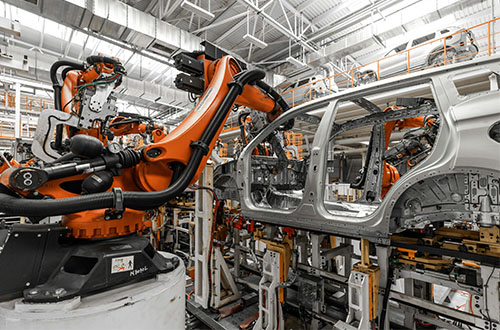

Government Agency – Migration of All Z/OS Applications to an Open Environment

Industry: Government
Headquarters: Europe
Coverage: National
Our Customer
The Customer is a government organization with over 45,000 employees. The organization provides assistance to unemployed citizens and helps them find jobs, as well as supporting them with financial aid. The organization was founded in 2009 as a merger of government agencies.
The Challenge
The Customer had an infrastructure modernization initiative, one component of which involved modernization of their IBM mainframe batch processing systems running z/OS, and application code consisting of COBOL, Pacbase, Assembler CICS, JCL, Db2, IMS DB and VSAM. The Customer needed to deploy their workloads on an open platform, while still keeping COBOL and Pacbase as development tools. In addition, the Customer’s development environment also included TWS (Tivoli Workload Scheduler), OPC (Operations Planning & Control), Cortex (Job scheduler), EGEN CA and SYSVIEW.
The Customer needed a new, open-source technology platform that could provide the high performance and reliability the business required, while also offering the flexibility to support changes in the organization and meet evolving regulatory requirements.
The Solution
The project team recognized the fastest path to success would be to migrate as much of the mainframe system COBOL application code as possible, intact, to the Linux platform, creating minimal disruption to the business.
The migration team deployed mLogica’s LIBER*M to accelerate the coding and recoding of z/OS applications.
The migration team divided the job into multiple phases:
- Utilize mLogica’s LIBER*Z tools to provide full emulation of z/OS CICS platform on the Linux environment and leverage the LIBER*COBOL compiler to recompile the COBOL application to Linux with minimal changes.
- Recompile Pacbase COBOL to standard COBOL, which was then recompiled to LIBER COBOL for Linux.
- TWS (OPC), Cortex, EGEN, CA SYSVIEW, CA DB were all rewritten.
- The Db2, IDS2, IMS and VSAM data stores were converted to PostgreSQL.
- Implementation of the new UAT (User Acceptance Testing) environment to perform security testing to identify security vulnerabilities.
In the first phase, the mLogica team migrated the data storage environment to PostgreSQL environment, which migrated the entire data set from the mainframe to Linux.
Next, our team configured a Linux-based z/OS CICS environment using the LIBER*Z emulation tools. The team then recompiled the application COBOL code to Linux, leveraging the LIBER*COBOL compiler. A number of the frequently-used job scheduling/management tools needed to be rewritten.
In the next phase, the end-state architecture was piloted in a test environment to analyze and confirm that the environment met user requirements and achieved the required performance thresholds. Eventually, the Customer was given access to their applications in a fully operational open environment.
The Benefits
This project was critical for the Customer to enhance the adaptability of their business systems while reducing support costs and ensuring minimal impact to the day-to-day operations of the business.
The role of our technological product, LIBER*M, was central to the entire modernization effort, as it enabled the rapid migration and testing of the recompiled application code, allowing quick migration off the mainframe to a modern, open platform with minimal user disruption.
The operational cost savings of migrating off the mainframe were dramatic. The Customer’s mainframe was quite large, more than 24,000 MIPS. The average annual cost per installed MIP is about $1,600. Hardware and software accounts for sixty-five percent of this figure, or approximately $1,040. Consequently, the annual infrastructure cost for this implementation of 24,000 MIPS mainframe is approximately $25 million annually. Obviously, eliminating the mainframe costs and running the same application to an open-source system based on commodity hardware dramatically benefits the bottom line.
Conclusion
Moving legacy applications and systems to an open environment with minimal impact on business users requires a combination of automated conversion tools, proven methodology and experience. However, the most important factor is experience; the knowledge of how to spot potential show-stoppers, to anticipate certain surprises and to be prepared with viable potential solutions.
The chief risk to this type of project is its potential impact to the day-to-day operations of the business. The secondary risk is cost; the longer a project takes, the higher the cost and the increased potential for failure. This “time to profit,” or the amount a time it takes to deliver value, is critical to project success. The speed that automation adds, dramatically shortening project timelines and costing far less, results in a dramatically lowered risk of failure.
This combination of automation, methodology and experience is how mLogica can guarantee success.








































